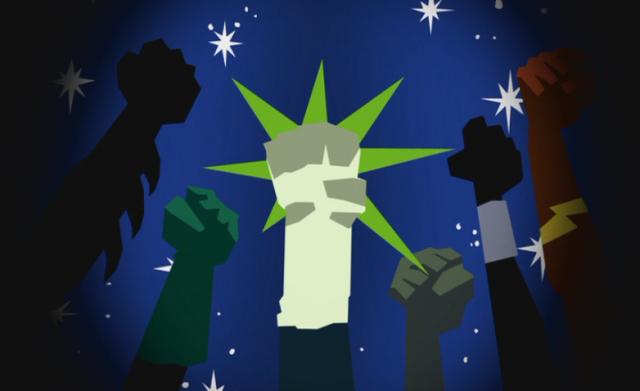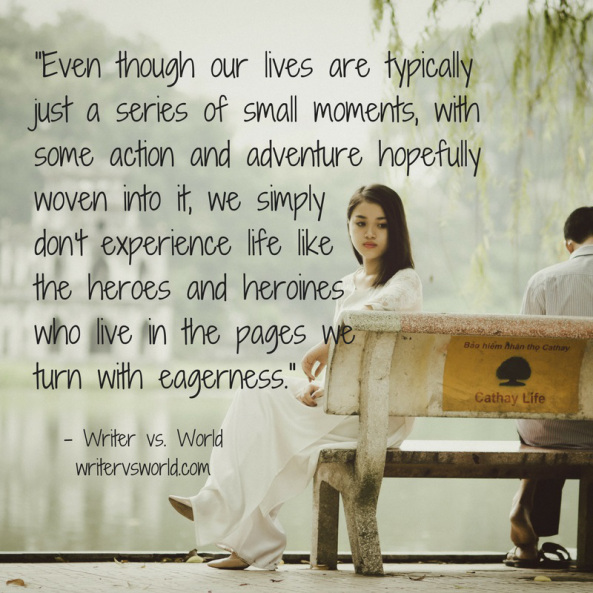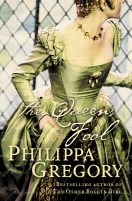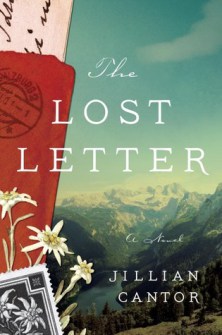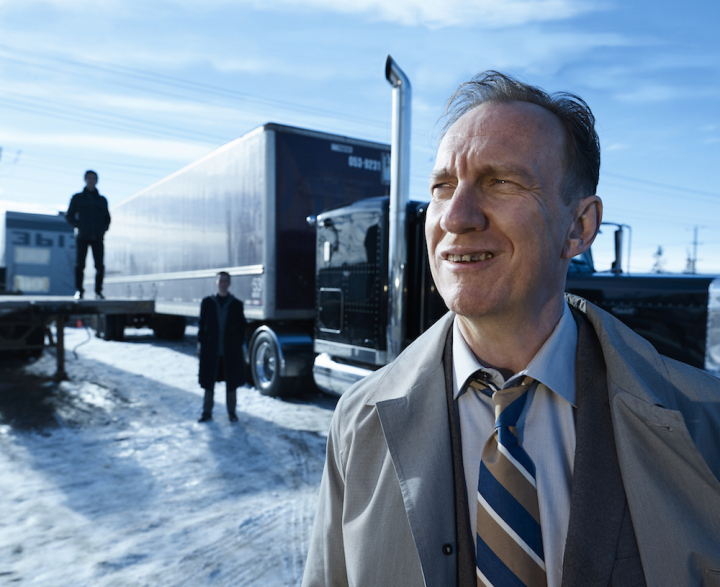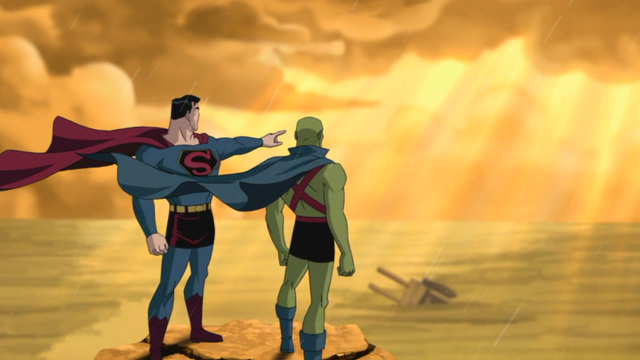
Like all things on this hurtling sphere, I emerged from the molten center of creation. But mine has been a unique path. Isolated, I developed attributes beyond those of lesser beings. Then the sphere was struck by a vast celestial stone. Black chunks of death filled the skies and the world became a chaotic world of doom. Soon the sphere began to nurture new kinds of life. And there was one that stood above the rest. Its fragile shell belied its vicious nature. And in what seemed like a heartbeat, these things proliferated in both number and destructive needs. Now they have harnessed the most destructive force. And I, The Centre, have concluded that the sphere must be cleansed of them.
—The Centre, “Justice League: The New Frontier”
For a couple of years, I knew a comic creator named Darwyn Cooke. I worked as an assistant at DC Comics, and my office handled most of his books. I had many discussions on the phone with Cooke. He was a brilliant artist and writer, with an intense love for the icons and heroes of his youth. But one of the recurring themes of our talks was his continuing disillusionment at the comic book (and, by extension, the entertainment) industry—his frustration with the caretakers of his icons and heroes.
He was disillusioned about many “smaller” things, things here and there—a corporate edict concerning Wonder Woman’s weight (seriously), editorial interference on a particular plot-point, etc.. But these things started to add up to Cooke. He felt as if there was a bigger…thing that was casting a shadow over the entire enterprise…something that wanted to…maybe even thrived on…”messing things up.”
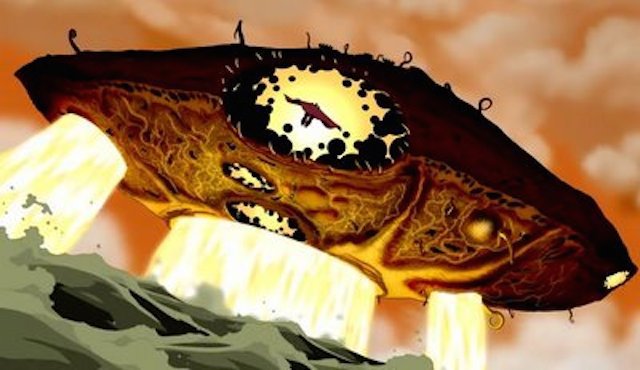
Something that wanted to “ruin” heroes, and recast them in a darker, more ambivalent light.
When I first watched the opening to the 2008 animated movie Justice League: The New Frontier—based on Cooke’s comic book mini-series of the same name—I thought back to those talks, and that sentiment. It is an opening unique to the cartoon and not found in the original source material—but it was entirely Cooke.

A cartoonist sits at his desk and writes/illustrates something called “The Last Story.” It is narrated by a sinister-sounding character called “The Centre,” and describes, apparently, the origin of the Earth, humans…and the intelligent ancient beings who pre-dated humans. It’s pretty Lovecraftian, with the Centre and its ilk being the “Ancient Ones” lying in wait under the Earth, waiting for their chance to trod again upon the surface.
This story is apparently too much for the cartoonist, who, after finishing it, grabs a gun and blows his own brains out.
It’s a very well-done, impactful, and somewhat shocking scene, even if you are not a comic book fan. And it establishes a theme that recurs throughout Justice League: The New Frontier—because this cartoonist seems “possessed” by the Centre itself, or by some sort of “information transmission” that he is spontaneously channeling. That information then gets transmitted to the pop-culture itself—the comic book.
The 1960s heroes of The New Frontier must band together to fight this Centre—a force that has seemed to infiltrate human life at every level (including with rocket scientists and cult leaders), preparing to reassert their dominion on Earth.
But there is a greater disillusionment going on with these heroes—as they face a public who is scared and suspicious of them, and a government that they increasingly cannot trust. This disillusionment is the Centre—both an entity and a general “energy” predominant in the zeitgeist. (Author Peter Levenda has called this energy “Sinister Forces,” and absolutely includes the Lovecraftian demons in that definition).
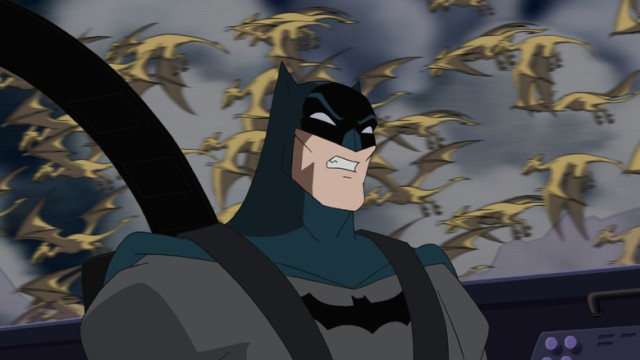
There are a number of plot points in The New Frontier that mirrors that of Captain America: Civil War (movies I watched back-to-back yesterday). And the most central (if you will excuse the pun) theme is this: That there are people/humans/humanoids on this planet who have greater “abilities” (and resources) than the average human, and who want to “better” the world and protect it from the amorphous evil that is the Centre; but that “regular” humans (including their governments) are too scared of these “superhumans” and want to control/limit their power.
And is this not the key theme in so much of the popular-culture that we encounter? The Avengers, the Jedi, Superman, the mutants, the test-subjects in Stranger Things, and so on?
It is a very complicated subject to pick apart, and certainly outside the immediate scope of this post—which is meant to commemorate the passing of Cooke, who died last year on this very day from cancer at the too-young age of 53.
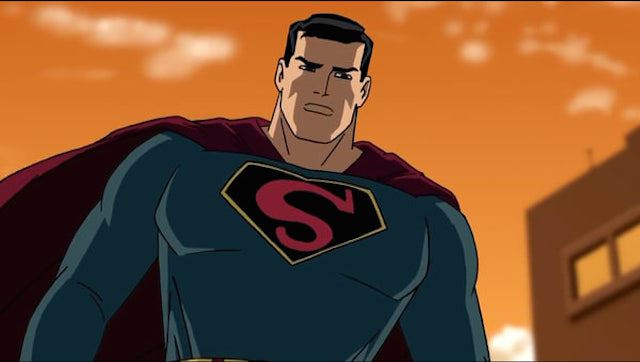
But a viewing of Justice League: The New Frontier—and/or a reading the graphic novel, part of which I helped edit—might be interesting to do.
Cooke’s epic tale of the battle of the iconic heroes of his youth—the archetypes of heroic figures from millennia—with the forces of darkness of the Centre is a timeless one…and yet, as we walk into an increasingly uncertain and (frankly) strange future, it might also be a most timely one.
I see I have your attention. We face a threat big enough to wipe us off the Earth. And still we bicker about a mask or a uniform. My best friend is lying upstairs right now. She would have given her life for this country and I could hardly look her in the eye. America was founded on the notion that a person should be free to follow his or her own destiny. But we can’t do that if we’re living in fear of our own government. We need to reclaim this country for free men and women everywhere.
—Superman, “Justice League: The New Frontier”
